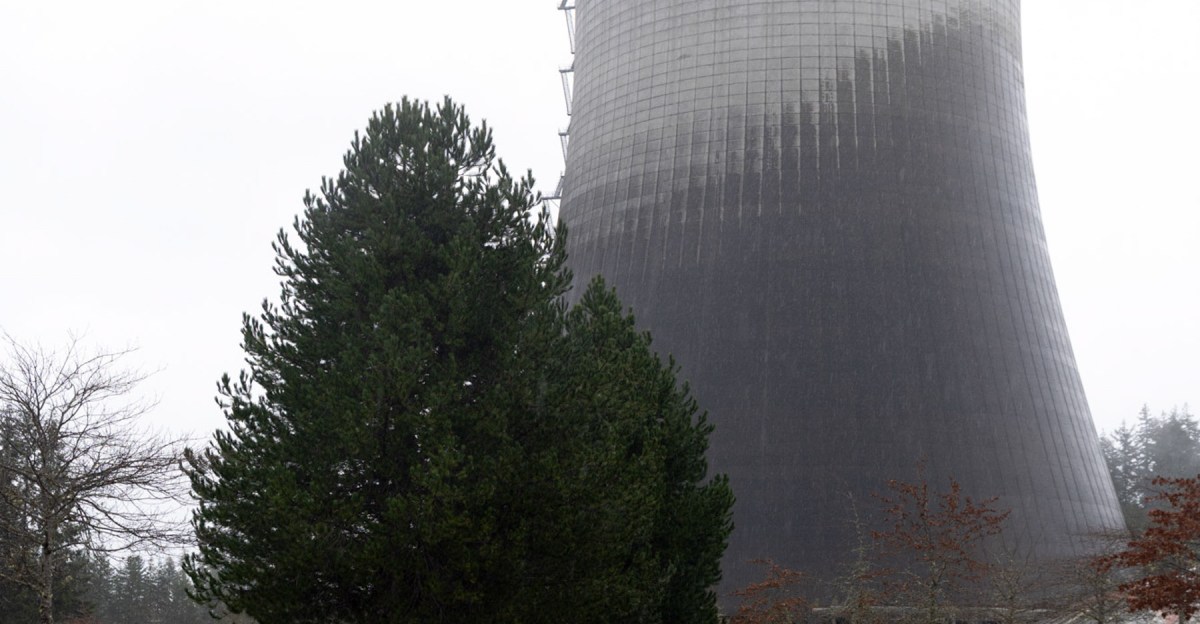
Transformation of an Abandoned Nuclear Power Plant into a World-Class Acoustic Laboratory.
These scientists have taken extreme measures to escape the noise.
The magnitude of a cooling tower is difficult to grasp until you find yourself right next to one. The cooling towers of the Washington Nuclear Projects 3 and 5 (WNP-3 and WNP-5) rise above the treetops as I approach the Satsop Business Park, an abandoned site located about an hour and a half from Seattle. This former nuclear power complex, with its enormous concrete structures in various stages of construction, has been transformed into an advanced acoustic testing center.
In March, on a rainy day, I visited Satsop to meet Ron Sauro, the owner and operator of NWAA Labs. In his lab, all types of products have passed through, from construction materials that mitigate sound to noisy washers and even airplane cabins. When companies want to check the sound levels generated by their products, they invariably consult Ron.
Entering the auxiliary building, which originally would have housed the WNP-3 reactor, the name of the Washington Public Power Supply System (WPPSS) strikes me as an odd reminder of what went wrong. Construction of WNP-3 and WNP-5 began in 1977, but budgets soon overflowed and the Three Mile Island incident in 1979 cooled enthusiasm for nuclear energy. By 1982, both projects had been abandoned, even though WNP-3 was nearly complete. Despite WPPSS's efforts to find buyers in the 1990s, no one showed interest in acquiring a decommissioned nuclear plant. Eventually, the land was managed by the Port of Grays Harbor, which now maintains the Satsop Business Park, which has hosted everything from film productions to a call center for Overstock.com, although the latter is now closed.
Despite the park largely seeming to have very little traffic, Sauro and his wife Bonnie decided to establish NWAA Labs in 2010, after convincing the building's owners about the viability of constructing an acoustic lab on site. Fifteen years later, they continue to operate, making the space one of the most unique in its field.
To measure sound, controlled spaces are required that fit the guidelines established by organizations such as the American National Standards Institute (ANSI) and the International Organization for Standardization (ISO). These provide strict guidelines to ensure the consistency needed in acoustic testing. At Satsop, the remote location reduces outside noise, and the thick concrete walls help maintain a controlled environment, conducive to accurate sound studies. The temperature and humidity are constant in the building, providing ideal conditions for better research.
The test room and laboratory are designed to evaluate everything from carpet samples to noise-canceling headphones. Whenever a product generates sound, the lab can quantify its level, which is essential for companies looking to comply with sound emission regulations.
Sauro’s story is also that of a scientist who has had to wear multiple hats, as his experience spans from NASA to his current role in Satsop. Over the years, he has had to perform various tasks, including carpentry, plumbing, and more, all to ensure the proper functioning of his laboratory.
As I leave, the peculiar nature of these enormous concrete buildings makes one wonder how nature will adapt to them in the future. As long as there is interest in transforming spaces like Satsop, it is clear that wildlife will seek its place within these forgotten environments.



